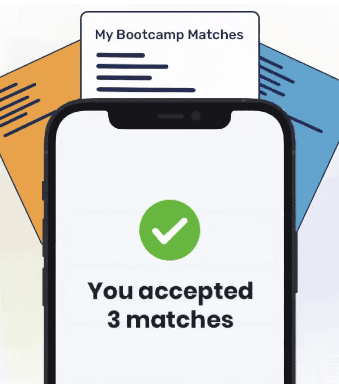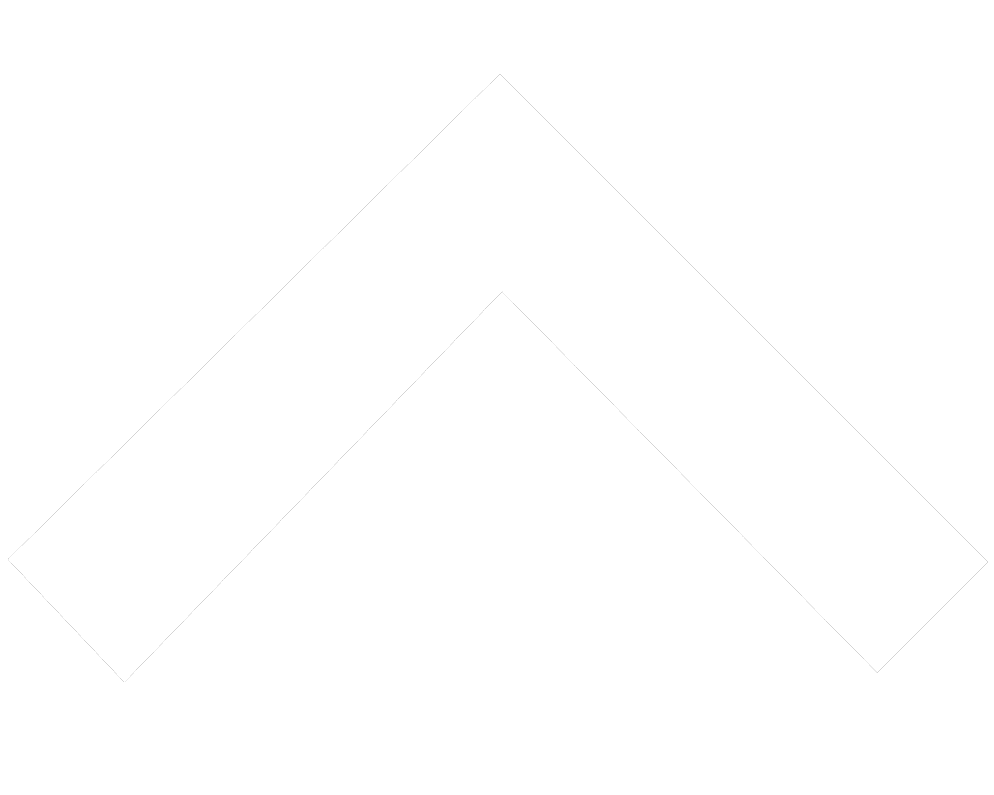Learning how to code can be challenging, especially if you don’t know where to start. There are a lot of resources available like online coding courses, coding bootcamps, and college programs that can help you learn to code. However, a lot of aspiring developers still wonder, “What is the easiest programming language to learn?”
Some of the easiest coding languages have relatively simple syntax, making it easy for learners to read and code in the language. After all, programming is a method of communicating with computers. You can achieve a lot of different tasks when you know how to code. As such, starting out with an easy coding language can help ensure a smooth learning journey.
This review will break down the easiest coding languages to learn for beginners. We will also look at key features of beginner-friendly and popular programming languages like JavaScript, HTML, Python, and C/C++ to help you narrow down your options.
What Are the Five Easiest Coding Languages to Learn?

According to many professional developers, the five easiest coding languages to learn are HTML, CSS, JavaScript, Python, and Ruby because they prioritize readability and share many common features with other programming languages. However, note that opinions may differ depending on your skill level, experience, and career goals.
These five languages are widely used by tech professionals across the globe in roles such as software development, web development, data science, and full stack development. This means learners have access to a huge array of resources like video tutorials, free coding courses, and online discussions that can help them learn more effectively.
Let’s look at other coding languages that are suitable for coding beginners in the list below.
17 Easiest Coding Languages to Learn for Coding Beginners
This detailed list of the easiest programming languages to learn for beginners offer a wide range of options to start with. We will go over basic information about each coding language before moving on to their use cases, as well as additional reading recommendations.
1. HTML
Caption: HTML is a markup language used in web development and is said to be one of the easiest coding languages to learn for newbies.
HTML stands for Hypertext Markup Language. It is one of the three basic building blocks of the web. You might recognize “HTML” as part of a link to a website or in your browser’s address bar. Although it isn’t technically a programming language, learning how to create an HTML page is often the first step in expanding your coding knowledge.
HTML is commonly used alongside JavaScript and CSS for front end web development. HTML is great for beginners because it has a simple structure with easy-to-define opening and closing tags. You also use elements in HTML to decide how text, images, and other interactive buttons are shown on a web page.
RELATED READING: HTML
To be as effective and efficient as possible when writing HTML, it’s helpful to have an editor that does some of the work for you. Check out our complete list of the best HTML editors to find an option that suits your preferences.
2. CSS
Caption: Thanks to its straightforward structure, beginners can expect to master CSS fundamentals in a short amount of time.
Cascading Style Sheets (CSS) is designed to be a simple coding language. It is used to customize the appearance of a website and define how it should look when viewed in a browser. You can use CSS to define animations, hide or show certain content, and control the positioning of the page’s elements. CSS can improve the look, readability, and functionality of a website.
In fact, the article you’re reading right now is built with HTML, CSS, and JavaScript. CSS is an ideal language for beginners because, like HTML, it will help you execute basic development tasks.
RELATED READING: CSS
When you start landing web development interviews, it’s crucial that you be prepared to answer some common CSS interview questions since any prospective employer will expect you to have mastered the technology.
3. JavaScript
Caption: JavaScript’s syntax and structure are said to be intuitive, making it a great coding language for beginners.
JavaScript is commonly used with HTML and CSS to implement client-side functionality using small scripts. This is why it’s often called a scripting language. You can use JavaScript to add features like dropdown menus and web applications to your website. It is beginner-friendly in that it doesn’t need a compiler to run, most browsers can serve as the default environment.
Beyond that, you can utilize frameworks like Node.js to use JavaScript in server-side programming. It is powerful enough to accomplish tasks like implementing a search algorithm, analyzing data provided by a user, or solving mathematical equations. There are even game engines built with JavaScript that can have impressive results.
RELATED READING: JAVASCRIPT
If you’re just getting started with JavaScript, the most important thing you can do to improve your skills is to get lots of practice. For great opportunities to put your new coding skills to work, take a look at our comprehensive list of the best JavaScript coding challenges online.
4. Python
Caption: Python’s English-like syntax makes it one of the easiest programming languages to learn as a beginner.
Python is a general-purpose coding language designed with readability in mind. As one of the easiest programming languages, it’s often used as an introductory language for computer science students in college. Python is very versatile and can be used to develop applications, automate processes, build operating systems, and more.
Python makes an excellent choice for beginners because it uses a simple syntax, comparable to the English language. This can make coding less intimidating for beginners. Python is also supported by a huge community of developers with lots of resources available to help beginners find their footing.
RELATED READING: PYTHON
There are limitless online resources for learning Python, but if you’re the type that prefers something a bit more traditional, be sure to check out our full list of the best Python books that will get you up to speed with this in-demand language.

"Career Karma entered my life when I needed it most and quickly helped me match with a bootcamp. Two months after graduating, I found my dream job that aligned with my values and goals in life!"
Venus, Software Engineer at Rockbot
5. Ruby
Caption: Ruby is one of the easiest programming languages to learn as a beginner because it has a supportive and friendly community of developers.
Ruby is a powerful programming language with a focus on simplicity and productivity. Ruby is often compared to Python, as the two languages have common use cases and similar features. With Ruby, you can perform complex tasks using minimal code. Companies like Airbnb, Hulu, and Shopify reportedly use Ruby in their tech stacks for web development.
It is also an open-source programming language which means beginners have access to plenty of resources like tutorials, books on Ruby programming, and online discussions. Ruby is commonly used with its framework Rails to create dynamic and responsive web applications.
RELATED READING: RUBY
If you plan on specializing in this language, make sure you’re prepared to answer some of the most common Ruby interview questions to impress your prospective employers.
6. Java
Caption: Java is one of the easiest programming languages to learn, suitable for people looking to get into backend development.
Java is a general-purpose programming language, popular for enterprise development and mobile application development. Java is many developers’ first exposure to the principles of object oriented design. It’s commonly used to teach college students the basics of design patterns and software engineering. You can find tons of online resources to help you learn Java.
One notable project that uses Java is the Android Software Developer Kit (SDK). This project allows developers to create applications for devices that use the Android operating system. Java was also used to build the foundation of Netflix’s streaming service. Uber, Instagram, Spotify, and Pinterest have also reportedly used Java in their tech stacks.
RELATED READING: JAVA
Curious how Java stacks up against other programming languages? Take a look at some of our posts comparing Java with the competition:
7. PHP
Caption: PHP is suitable for complete beginners because it has a much simpler syntax when compared to other popular languages.
PHP, or Hypertext Preprocessor, is one of the easiest programming languages to learn, especially if you already know HTML. It is mainly used to provide the backend server functionality that is essential to many websites today. PHP makes it easy for developers to retrieve and store data in databases while also processing and replying to users’ requests.
Creating your first PHP program is as easy as embedding PHP code into an HTML page and uploading the file to a server that can process it. Many online resources can help you learn PHP. Some notable projects and services that use PHP include Facebook, Tumblr, and WordPress.
8. C/C++
Caption: C and C++ have been around for decades and remain popular among modern developers, thanks to their ability to build high-performance systems.
C and C++ are often referred to as low-level languages. They are especially useful for building high-performance systems. C++ can be thought of as an extension to the C language, adding features like object-oriented programming. A few projects that use these languages include the Linux Kernel, which is written in C, and Adobe Photoshop, which is written in C++.
C and C++ may seem intimidating because of the added complexity of the way you manage and interact with the programs’ memory. However, learning C and C++ can provide you with a strong foundation in programming, making it easy to understand more nuanced concepts.
RELATED READING: C/C++
Get prepared for technical interviews by studying these top C++ interview questions.
9. C#
Caption: C# is a great programming language to learn as it allows you to create a wide variety of applications and software.
C# is a general-purpose coding language that is developed by Microsoft for Microsoft. It can be used to develop web apps, cloud-based services, enterprise software, and more. It also provides full support for object-oriented programming. Perhaps one of the most recognizable use cases of C# is game development using the popular Unity game engine.
C# may not be the easiest programming language to learn when compared to the rest on this list. However, many programmers agree that C# is worth learning. There are many helpful online resources for learning C# given the size of its community. Most answers can be found either by using a search engine or by reviewing online tutorials.
RELATED READING: C#
If you’re interested in game development, be sure to check out our guide to the best 2D game engines to get started creating your own games.
10. R
Caption: R is a coding language that is primarily used for data science.
R is a coding language that is primarily used for data science, deep learning, and machine learning. If you’re just starting with programming, you may find that R has a steep learning curve. However, there are a lot of R add-on tools like RStudio and lintr that can help simplify the process.
Like Python, R is commonly used to perform statistical analysis of data, build web applications, and write scripts to accomplish various tasks. Learning R is a great option if you’re considering becoming a data scientist or simply love working with statistics.
11. Go
Caption: Go is designed to be the simplest coding language to learn with straightforward and easy-to-remember syntax.
Caption: This is Go’s mascot: Gopher.
Go, also known as Golang, is a general-purpose programming language developed by Google with syntax and use cases similar to C and C++. Its goals were to simplify the syntax and general complexity of these and other languages. Go can be used in systems engineering, software engineering, and data science.
Go is often used to implement components of larger projects where execution speed is important. For example, in 2014, Dropbox used Go to improve the performance of its backend systems, especially concerning access to its database. You can find a lot of online Golang courses, classes, and training that can facilitate your learning.
12. Rust
Caption: Rust is a great coding language when security is a top priority.
Rust is another general-purpose programming language based on C and C++. Rust is strict on how you interact with memory. This approach minimizes the possibility of bugs or vulnerabilities in programs while maintaining a high level of performance. As a result, Rust is an increasingly popular choice for building systems where safety and security are essential.
One great demonstration of how Rust is used can be found in the Firefox browser itself. It was used to improve the efficiency of the CSS engine while simultaneously reducing the number of potential security vulnerabilities. Even though Rust is especially appropriate for system-level programming, it’s not unheard of for people to start their programming journey with Rust.
13. Swift
Caption: Apple designed Swift to be an easy-to-learn programming language, suitable for beginners looking to build applications for Apple devices.
Apple developed Swift in 2014 specifically for use within its own technological ecosystems like macOS and iOS. Swift is also easy to read and write, so it’s a good option for novice programmers. To guide beginning coders through the Swift programming language, Apple created a free application called Swift Playgrounds.
Even if you have zero programming experience, Swift Playgrounds can help you quickly learn the fundamentals of Swift before moving on to more complex concepts. Swift Playgrounds provides direct guidance as you learn Swift, and it’s a useful resource that will teach you skills applicable to any programming field.
14. Erlang
Caption: Erlang is a relatively easy programming language to learn, allowing developers to execute complex tasks with just a few lines of code.
Erlang is a functional, general-purpose programming language. As one of the easiest programming languages for beginners, it made its first appearance in 1986 with a focus on concurrent programming. That means its features are ideal for building systems where multiple, distinct processes need to run simultaneously while still communicating with each other.
Unlike other programming languages on this list, Erlang only supports functional programming. It emphasizes the use of mathematical functions to accomplish tasks. This type of programming usually reduces the reliance on an external state or data. Ultimately, it is easier to debug and more likely to be executed safely alongside other processes.
15. Elixir
Caption: Just like C++ to C, Elixir is an extension of Erlang.
Elixir is an extension of Erlang but with added syntax and tooling to build scalable web services. Discord is one of the most recognizable Elixir users, providing support to more than five million concurrent users while processing millions of events per second. Pinterest also used Elixir to improve the performance of its API service.
With that being said, it might make sense to start with Erlang or Elixir as a first language if you’re looking to learn functional programming concepts. Elixir is also useful if you’re interested in designing systems that provide services where scaling to heavy demand is important. New programmers can use resources like Joy of Elixir to start their learning journey.
16. Scala
Caption: Scala is commonly used for implementing backend functionality.
Scala builds on a foundation laid by Java, making it one of the best programming languages to learn for beginners. It brings a focus on functional programming and concise, flexible syntax. Scala’s additions make it easier for expert developers to solve problems more efficiently. Scala is commonly used in data processing, web development, and data engineering.
Twitter first picked up Scala for performance reasons in 2009, and it is perhaps one of the largest Scala users. Most online learning resources for Scala assume you already have at least some experience in programming. However, you can also find great resources for Scala beginners like Introduction to Programming and Problem Solving Using Scala and Scala School.
RELATED READING: SCALA
Want to learn more about this popular backend language? Head over to our brief introduction to get an answer to the question, what is Scala?
17. Clojure
Caption: Clojure is notable for adding immutable data structures to Lisp.
Clojure is a functional programming language based on Lisp, a language that first appeared in 1958 with a unique parenthetical syntax. Clojure added features like immutable data structures to Lisp which makes it easier to write concurrent systems. Companies like Walmart use Clojure for backend services to build systems that can handle large volumes of activity.
Considering Clojure’s focus on being useful for concurrency, it’s not surprising that it’s often used for building services where this is important. Because it is a functional programming language, you may think that Conjure is not a great first language for beginners. However, it has a relatively minimal syntax which can ease your learning process.
RELATED READING: CLOJURE
Now that you’ve been introduced to Scala and Clojure, you might be wondering how they compare head-to-head. To find out, read our comparison: Clojure vs Scala.
What Is the Easiest Coding Language to Learn First?

The easiest programming language to learn first is JavaScript, according to many experienced developers. This is because you can start learning JavaScript with nothing more than a web browser and a text editor. JavaScript is also supported by a huge community of developers which may be beneficial for new programmers looking for additional resources.
In terms of overall complexity for someone just starting with programming, you could argue for a ranking like the following, with the first being the easiest coding language to learn.
1. JavaScript and PHP
JavaScript and PHP are perhaps the easiest programming languages in this list for achieving a tangible result, when combined with HTML and CSS. They both boast intuitive and simple syntax, making them accessible to novice coders. Having these skills can help you learn any of the harder coding languages quicker, and in turn, boost your career opportunities in tech.
2. HTML and CSS
HTML and CSS aren’t really programming languages but they will give you familiarity with using a text editor and building documents according to well-defined rules. Understanding HTML and CSS will help you learn the fundamentals of programming fast. Every website is also coded using HTML and CSS so these are great skills to have for aspiring web developers.
3. Python, Ruby, Go, R, and Swift
Python, Ruby, Go, R, and Swift are some of the easiest programming languages to learn first.
They are designed to be beginner-friendly, boasting straightforward and clean syntax. They are also beneficial in areas like mobile applications, desktop applications, data science, and more. You can find a lot of online resources associated with these languages to speed up learning.
4. Java and C#
These two languages are moderately complex, so they may not be your first choices. However, Java and C# are well-established which means there are a lot of resources available to help you with any questions you may have as a beginner. Java and C# skills can help you explore a career in software engineering, enterprise software, game development, and more.
5. C and C++
C and C++ are at a low enough level that you will have to be aware of how you manage your memory, in addition to learning basic programming concepts. However, neither of these languages would be considered super complex. In fact, some recommend the C languages for beginners because it would help them build solid core programming skills.
Ultimately, the easiest coding language to learn depends on a number of factors like your background, motivation for learning, and interests. Each of these programming languages offers different benefits and uses for developers. If you have specific goals to achieve, you should review each programming language mentioned above and see which would be a good fit.
Easiest Ways to Learn a Programming Language
The easiest way to learn the basics of a programming language is by establishing your personal learning style and preferences. If you work well in a guided environment, you may want to look into coding bootcamps. On the other hand, if you are a self-starter, you can take advantage of online resources that offer more flexibility. Let’s look at some of the most popular options below.
Free Online Resources
If you are just starting, you may want to consider free online resources like these YouTube coding channels. They are generally bite-sized videos that explain fundamental programming concepts concisely. You can also use other tools to learn to code for free such as coding apps, courses, and classes.
MOOCs
Massive open online courses (MOOCs) offer open access to any online learners. Popular platforms like Coursera, edX, and Udacity typically offer both free and paid options, allowing you the freedom to choose. Most free courses introduce learners to the basics of programming while paid courses offer additional features like hands-on exercises or certificates of completion.
Coding Bootcamps
Coding bootcamps offer immersive, fast-paced training that is geared toward career preparedness. Some coding bootcamps can help you learn to code in as little as one month but more in-depth training typically takes longer to complete. Many students find coding bootcamp appealing because the curriculum caters to beginners, career-changers, and upskillers.
Which Programming Language Should I Learn First?
The first programming language you should learn depends on several factors including your interests and the career path you wish to pursue. Many developers find value in learning the easiest languages first as they provide a basic understanding of programming concepts.
As the article highlights, some of the easiest programming languages to learn are JavaScript, Python, HTML, CSS, Golang, and Ruby. Each of these languages has its own features so do some research or try out free coding lessons to see which language you should learn first. This preparation can set you up for success as you embark on your programming journey.
Easiest Programming Languages to Learn FAQ
How long it takes to learn programming depends on your approach. The fastest way to learn to code is by attending a coding bootcamp which usually lasts between three and six months. Alternatively, you can learn to code in six to 12 months through self-study or in four years with a traditional college education.
What are the hardest programming languages to learn?
The hardest programming languages to learn are Prolog, Lisp, Haskell, and Malbolge. Some of them are designed in such a way that your program must be flawless in order to run smoothly. If you are a coding beginner, it’s best to start with the easiest to the hardest programming languages. Popular options for beginners include Python, JavaScript, HTML, CSS, and Ruby.
What is the easiest programming language to learn for web development?
The easiest programming language to learn for web development is JavaScript. It is a high-level, interpreted language with simple syntax and structure. JavaScript is also one of the easiest programming languages to learn for game development, especially if you are building web-based and mobile games.
What is the easiest programming language to learn in one week?
The easiest programming language to learn in one week is CSS. It is technically a scripting language used alongside HTML and JavaScript to create dynamic web pages. CSS is exclusively used to customize the appearance and displays of a website. This makes it less complex and easier to learn in a short amount of time than other programming languages.
About us: Career Karma is a platform designed to help job seekers find, research, and connect with job training programs to advance their careers. Learn about the CK publication.




Unquestionably believe that which you said. Your favorite justification appeared
to be on the web the easiest thing to be aware of.
I say to you, I definitely get annoyed while people think about
worries that they just do not know about. You managed to
hit the nail upon the top and also defined out the whole thing without having side effect , people could take
a signal. Will likely be back to get more. Thanks
I’ve started familiarising myself with Java then later on with HTML, CSS. These are the programming languages that I often encounter when reading or studying UX/UI Design fundamentals. Are there other programming languages that I need to learn while studying UX/UI Design?
Yes because when I think of oop I think Windows/Apple app store!
That’s essentially what all these amazing lingua franca’s boil down to, your time would be better spent learning a database and photoshop for a front end. Rather than scratching your ass while building a nuclear powered space sandwich.
That’s hilarious. Thank you!